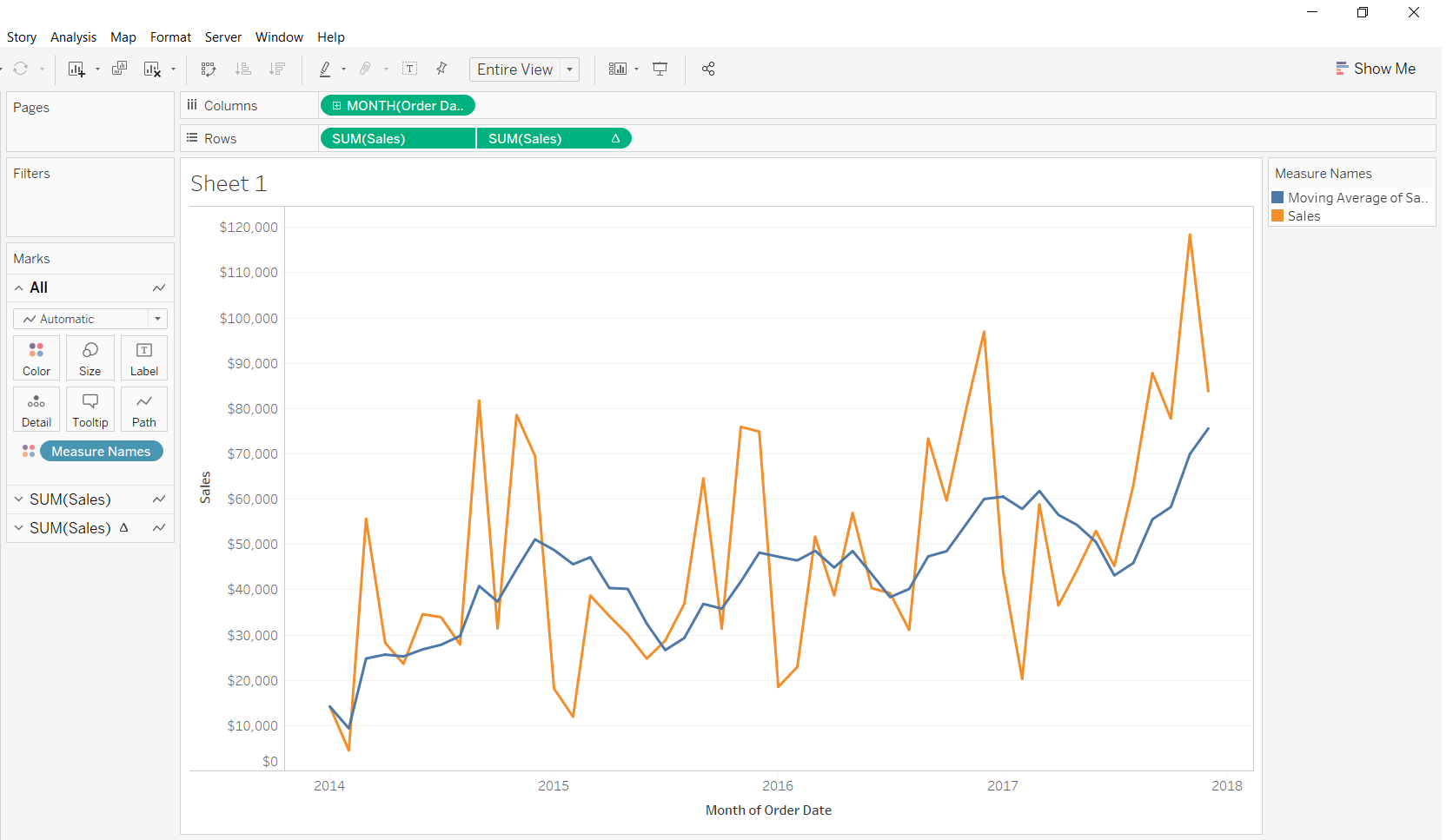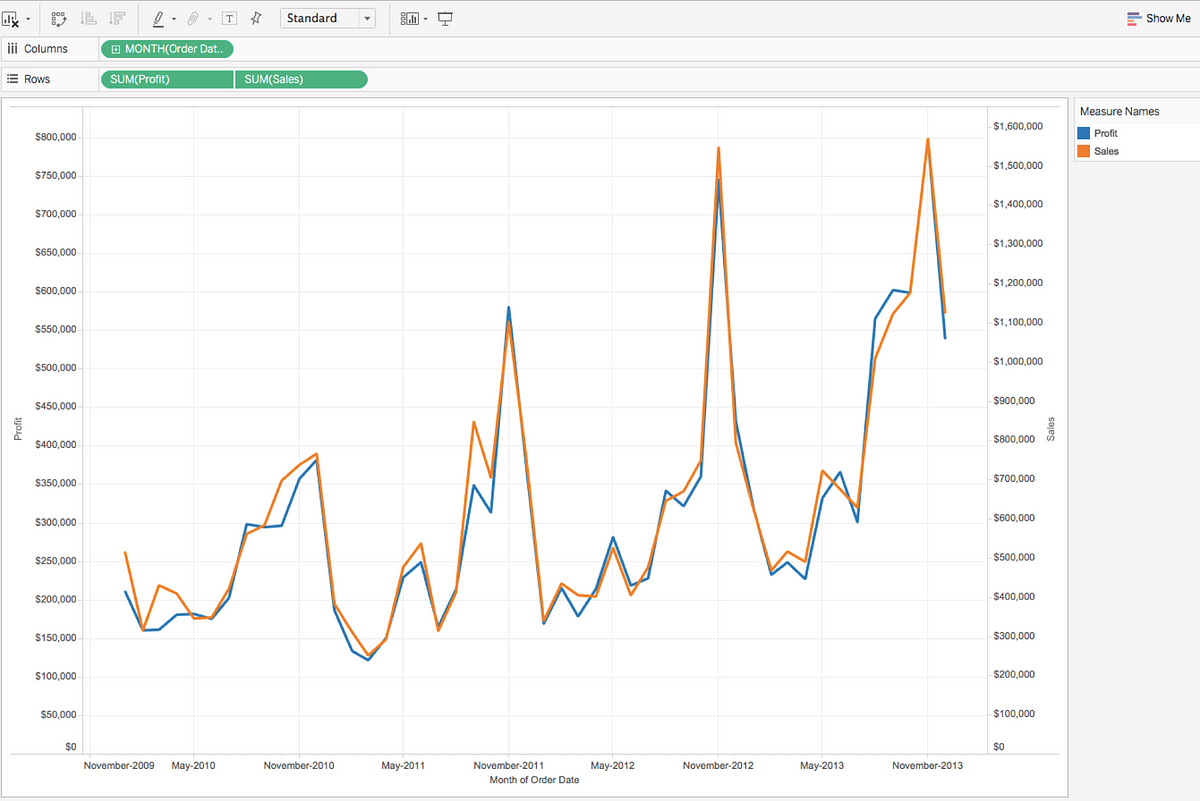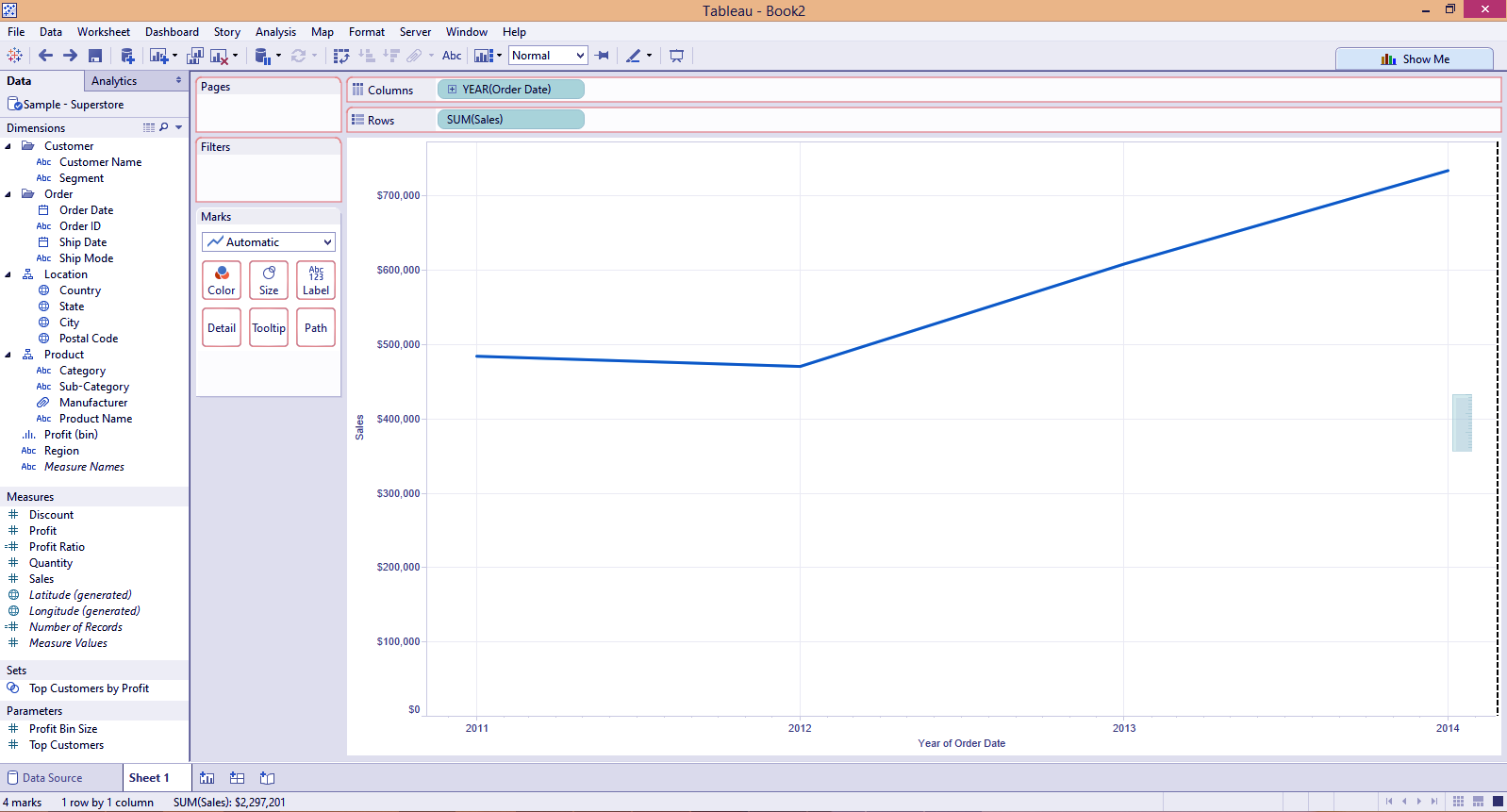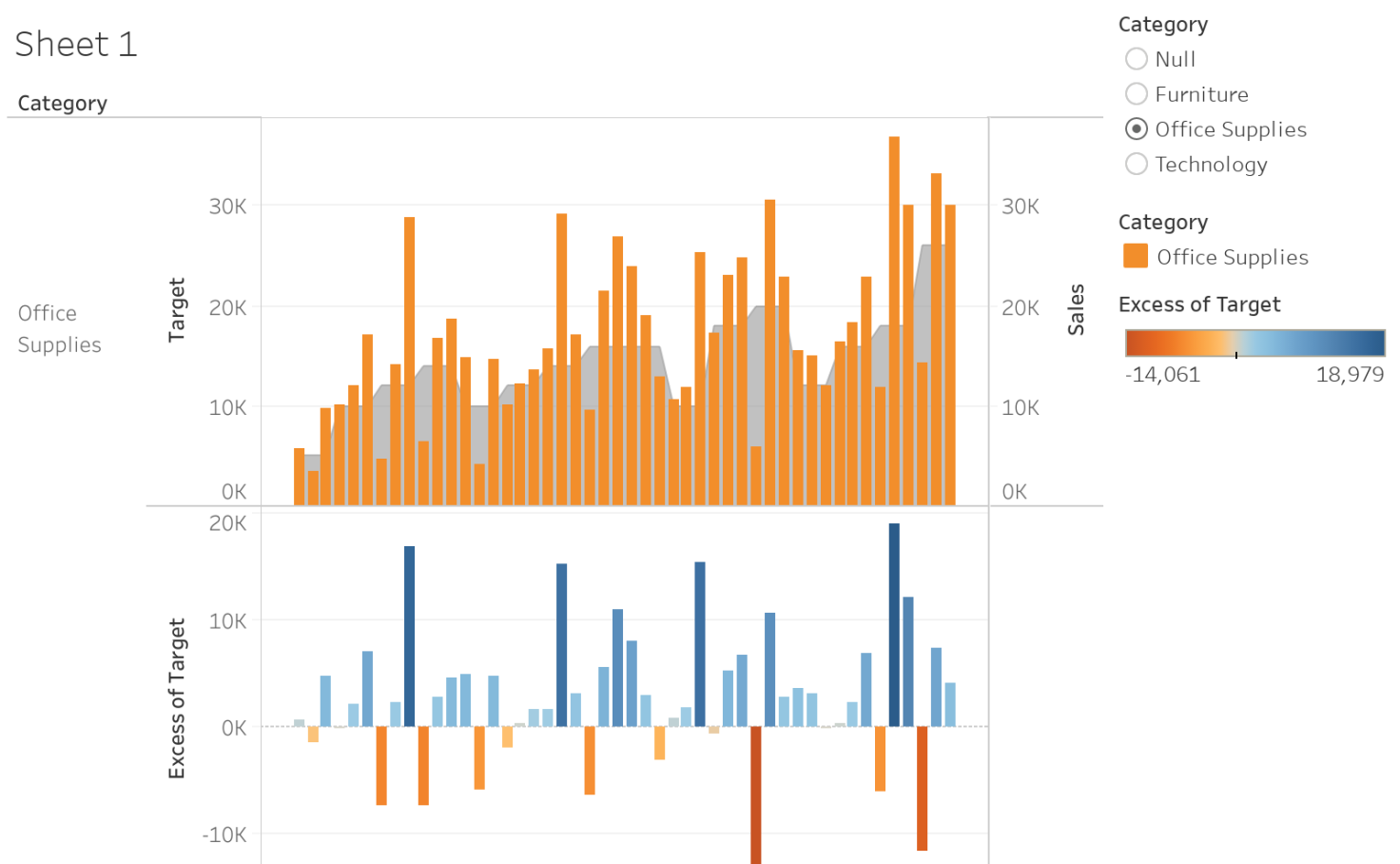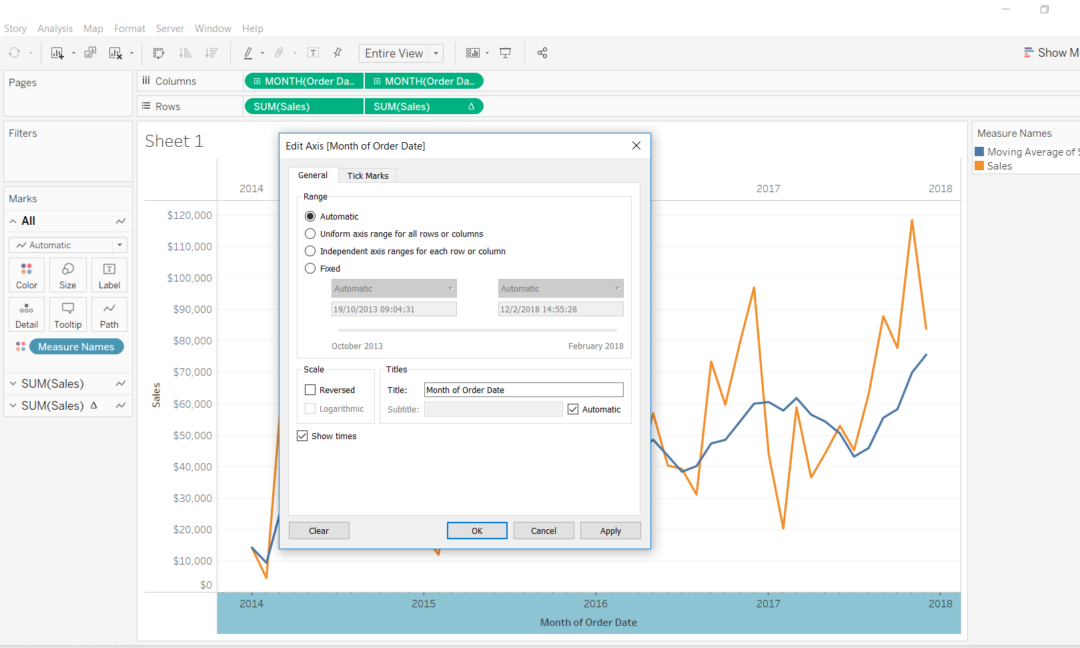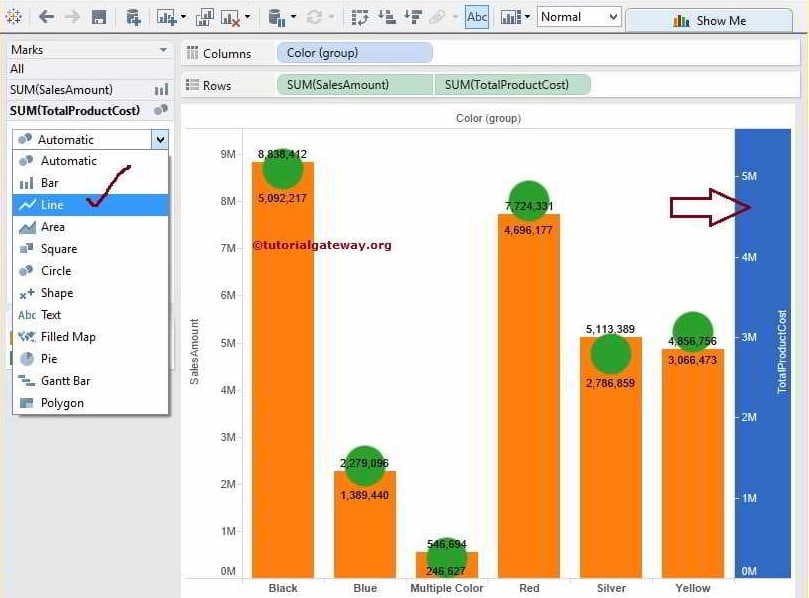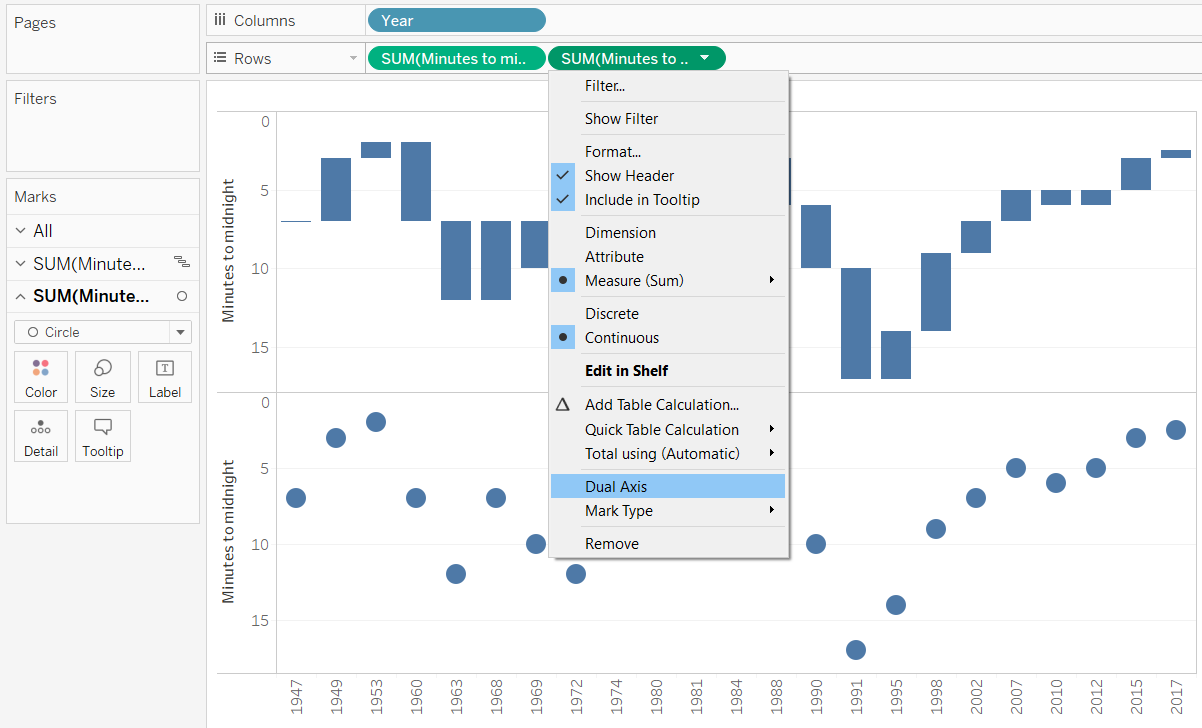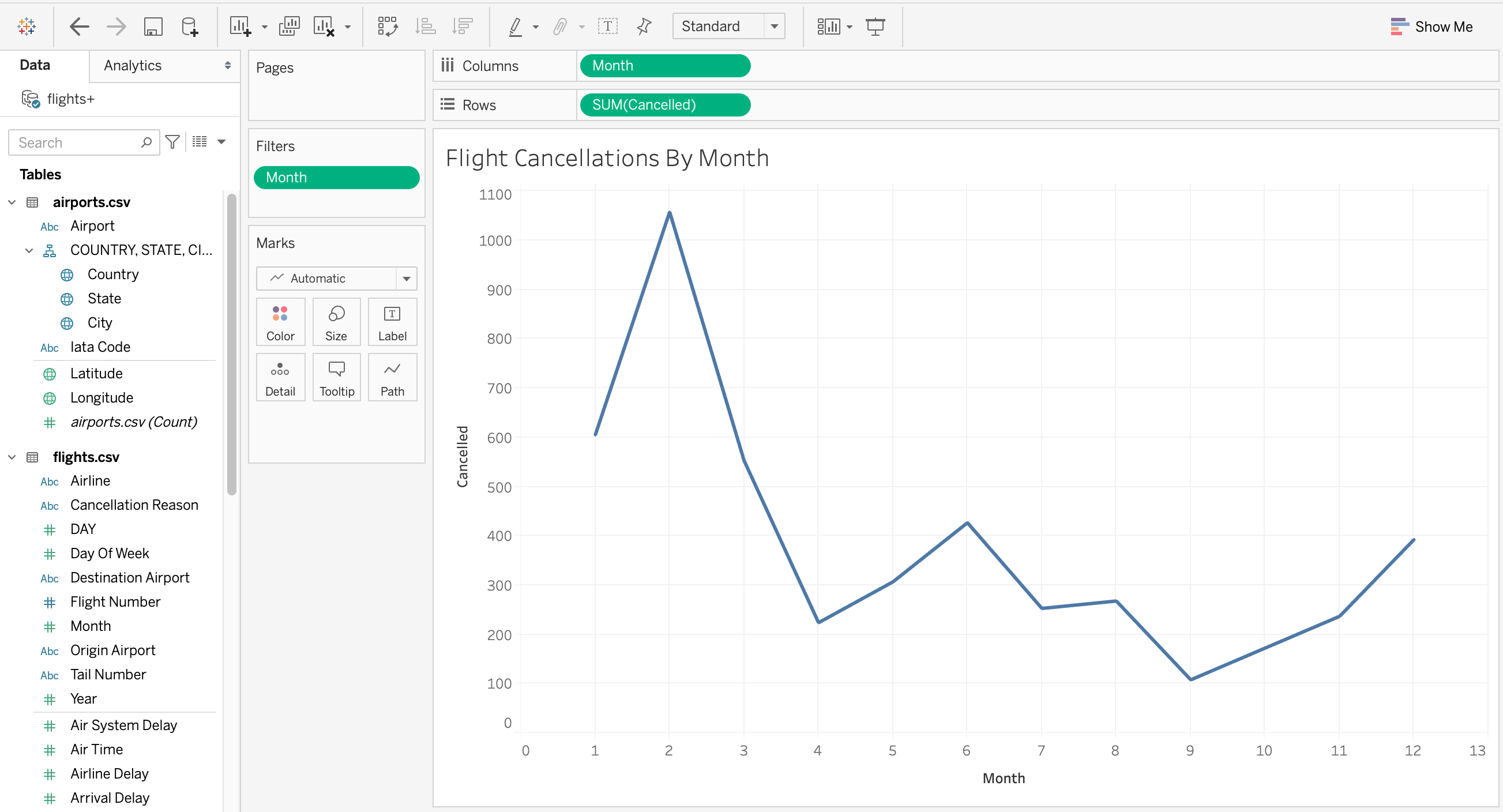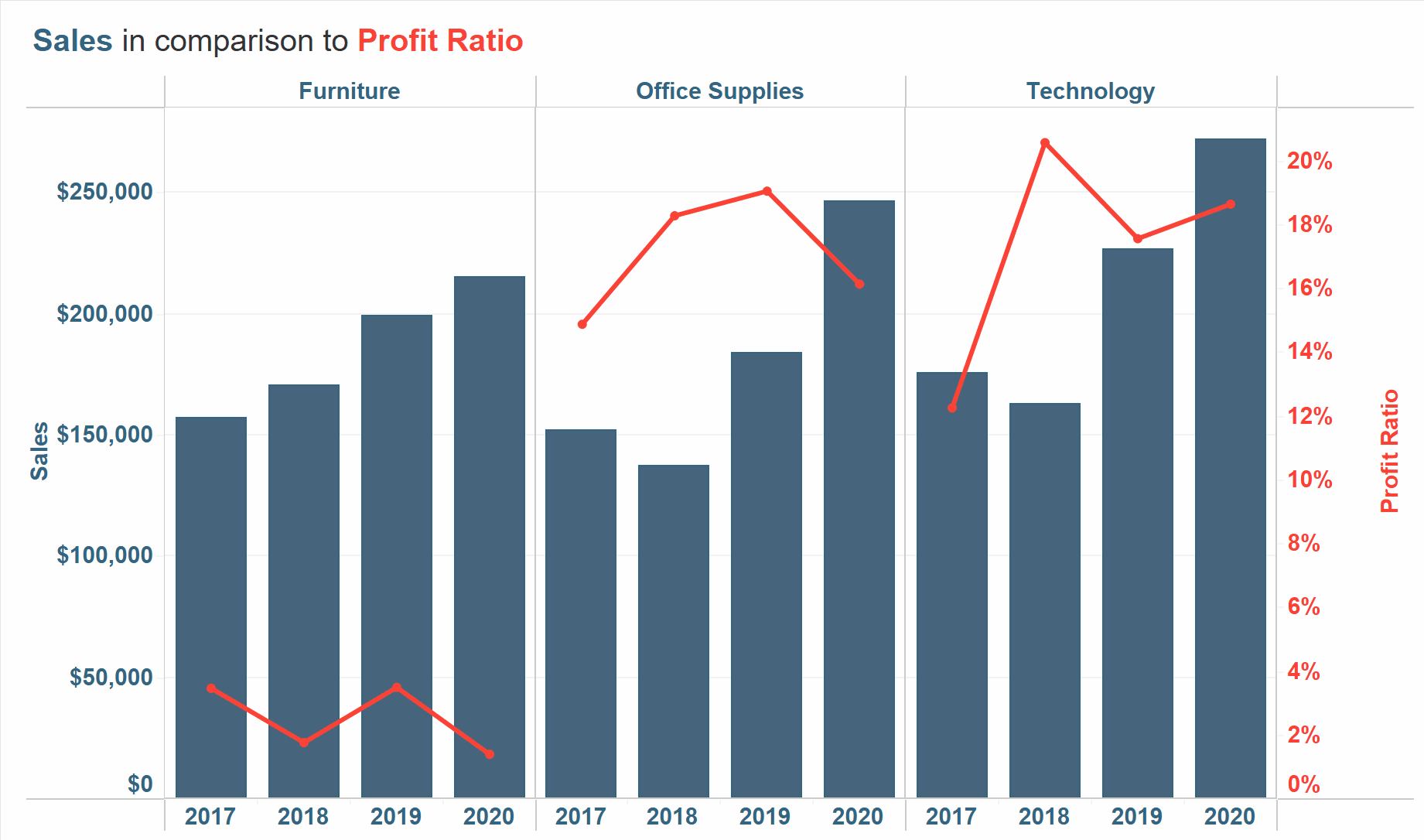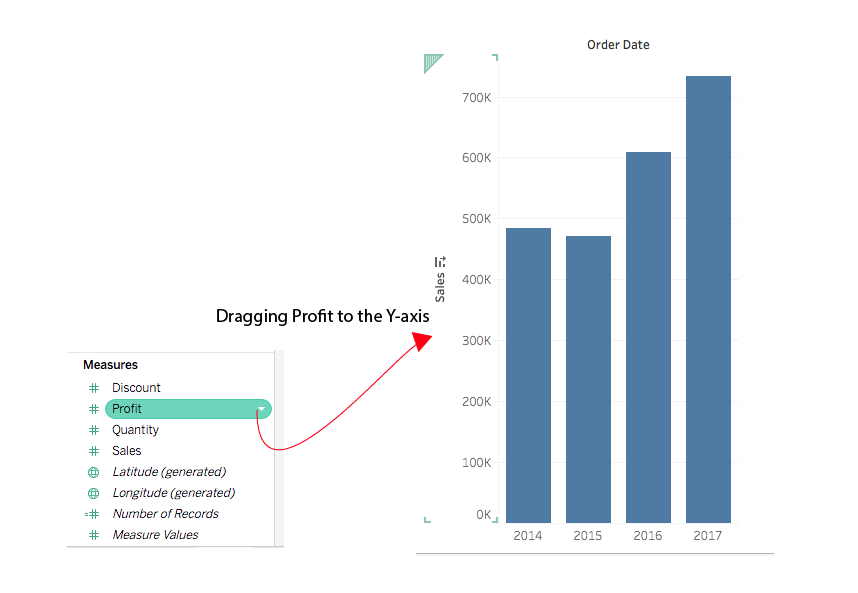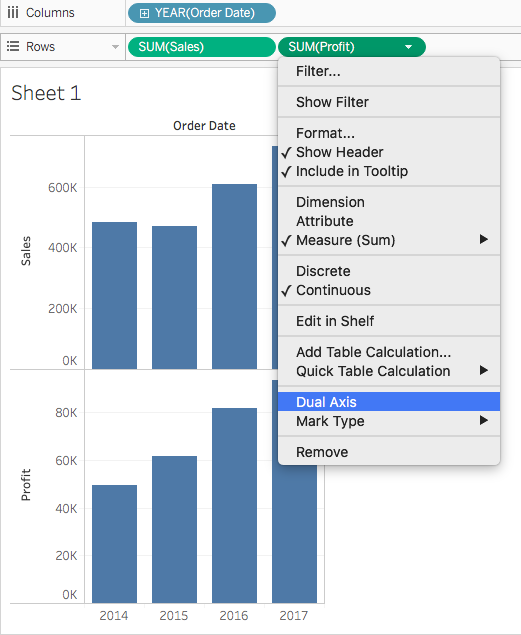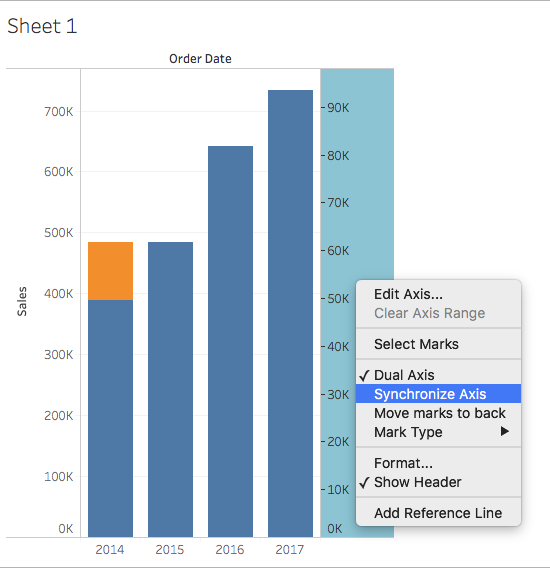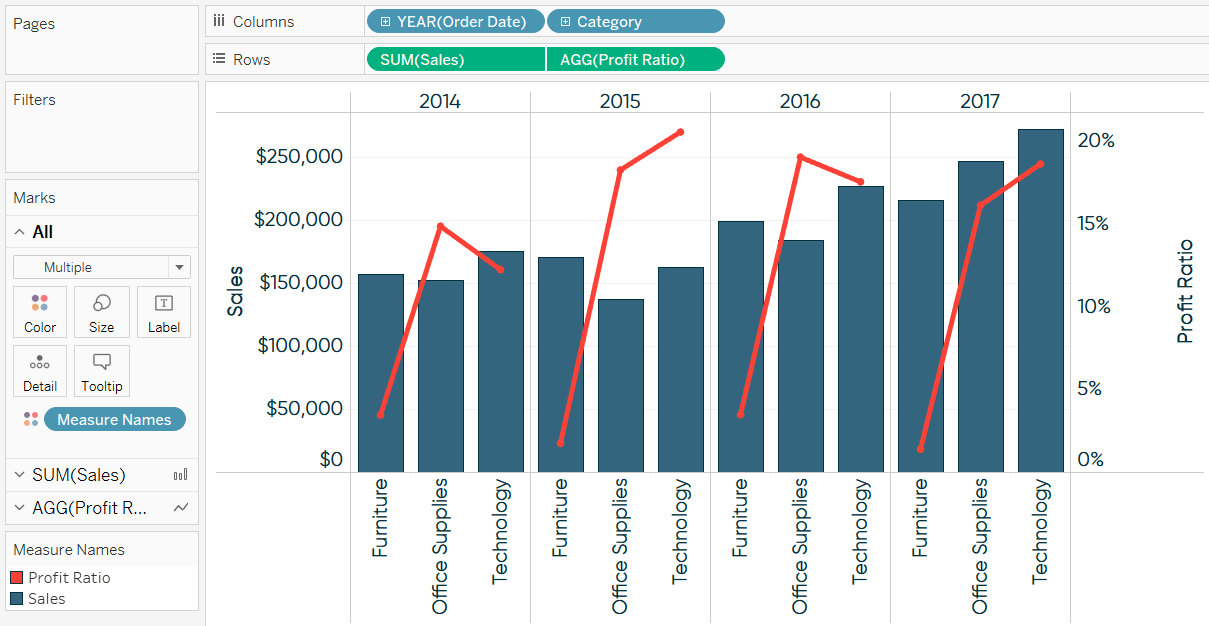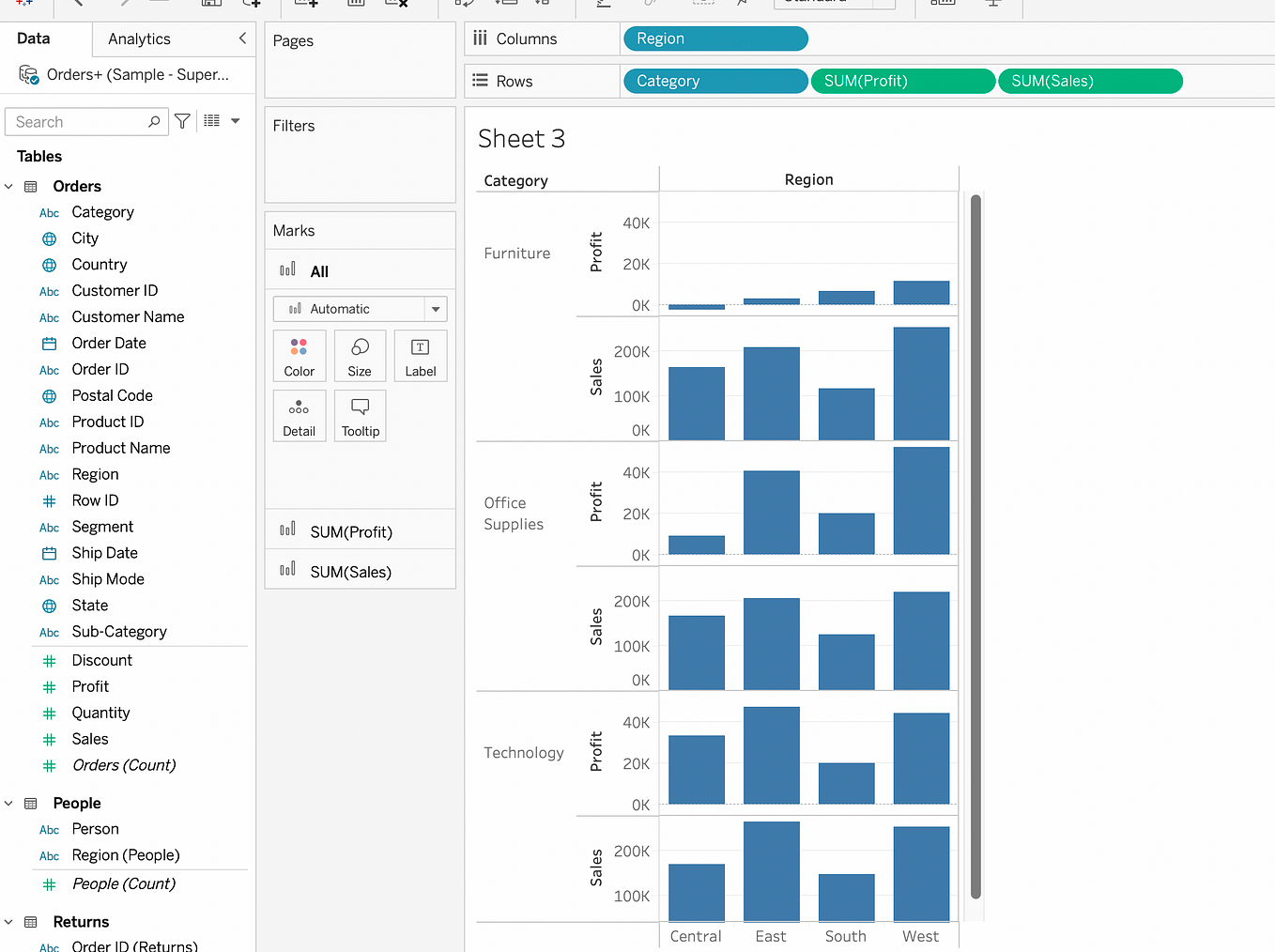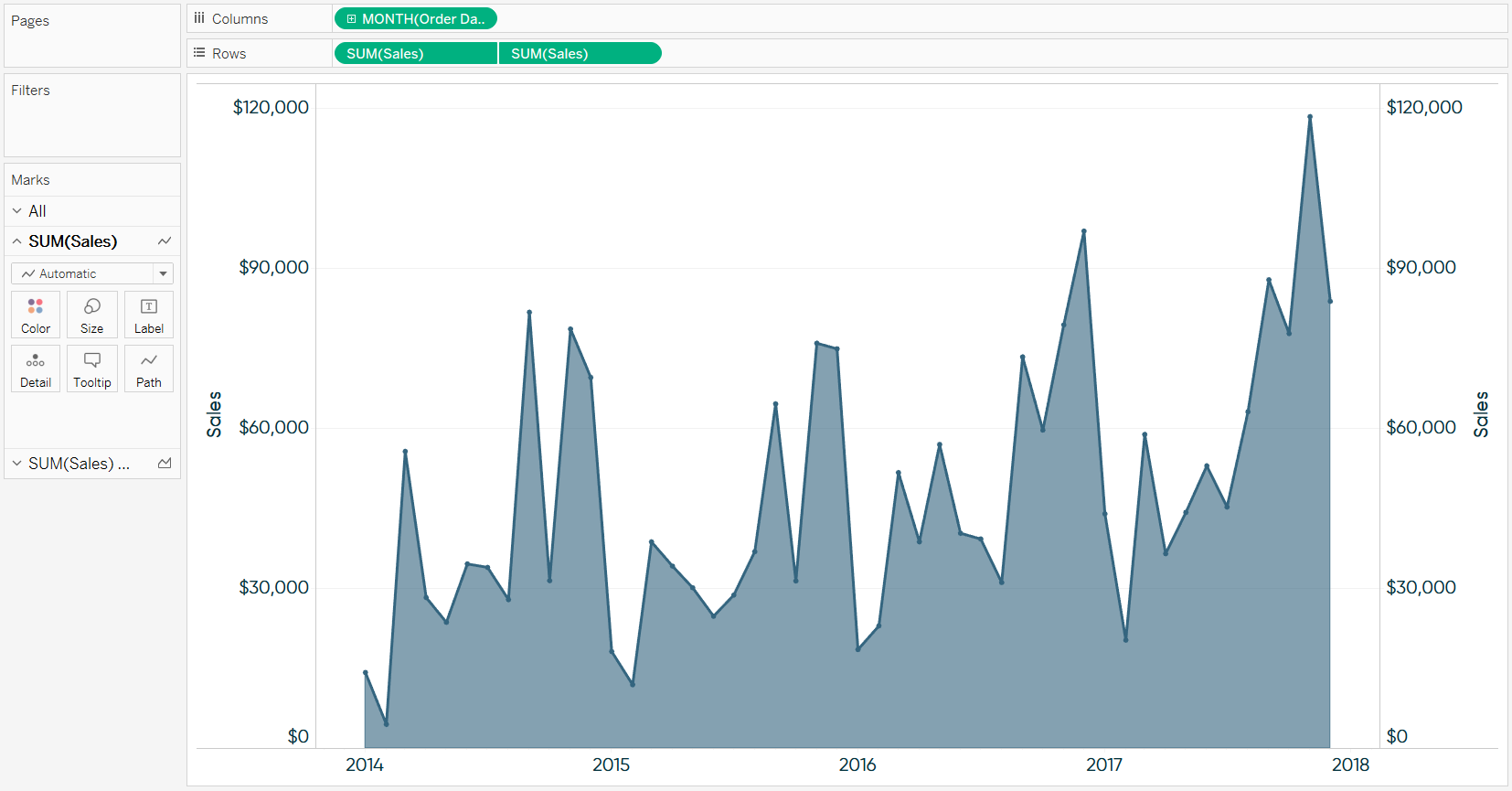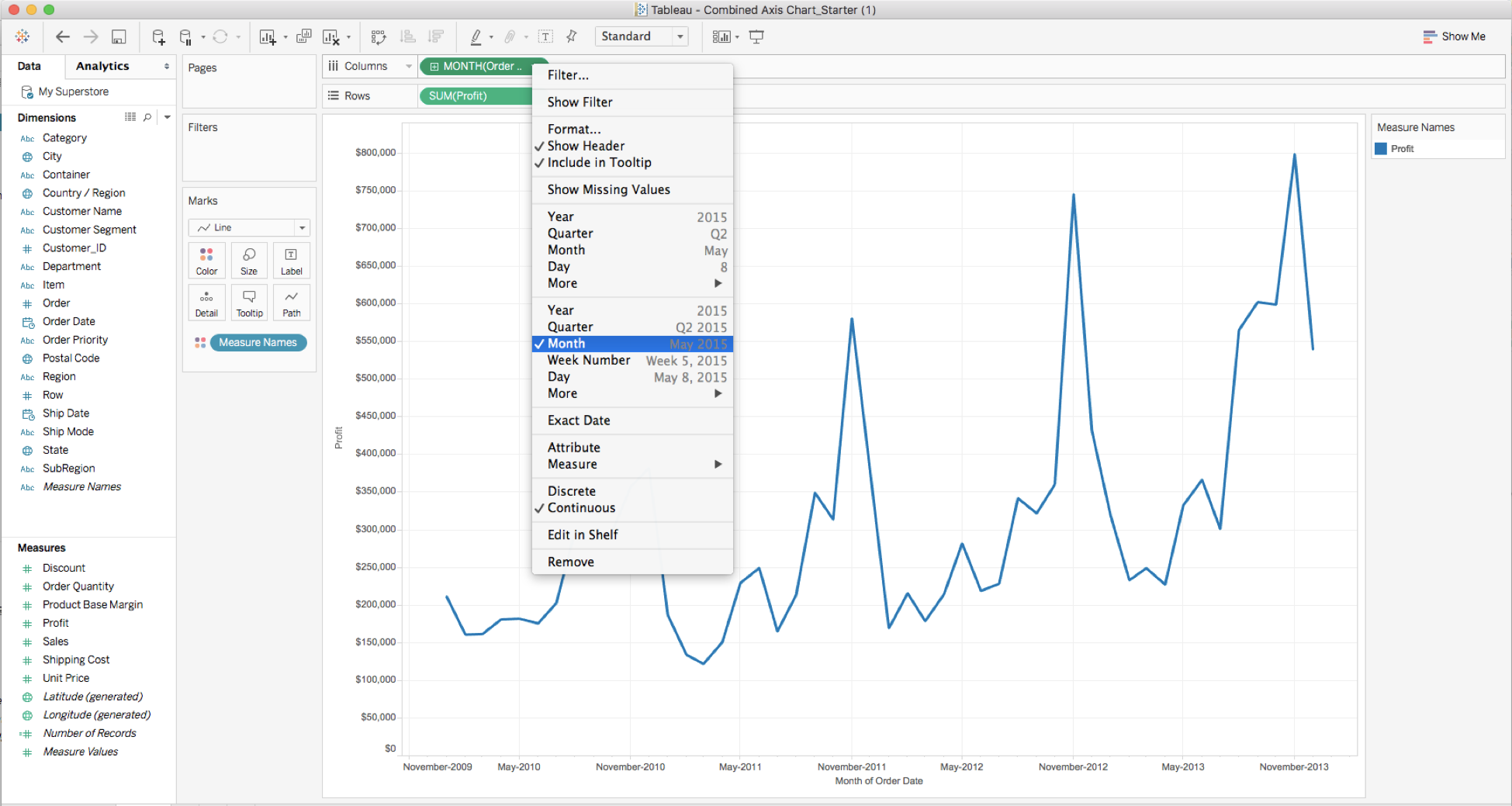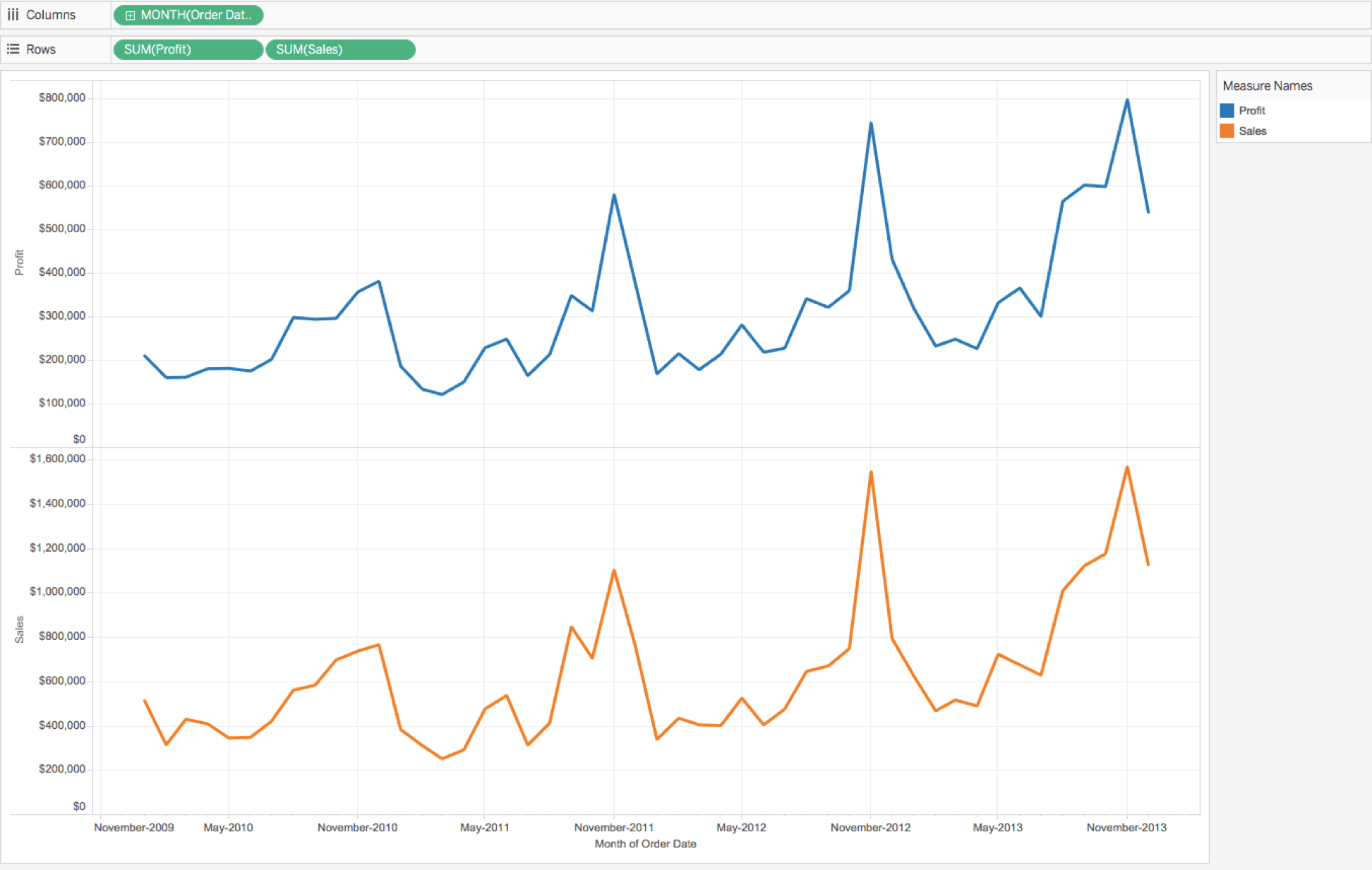Unbelievable Tips About How Do I Add An Axis To A Tableau Chart Plant Growth Line Graph

Synchronizing axes is an optional step if both measures share the same unit.
How do i add an axis to a tableau chart. Total(avg(revenue)) place this to the right of revenue on the rows shelf. The calculated field will look like the following: This will allow you to create a dual axis chart.
Click on a blank cell on the same sheet as your project table. In a scatter plot, both axes in the chart are measures rather than dimensions (one measure on the column shelf and another measure on the row shelf). Up to four layered axes can be added:
In any of these cases you can customize the marks for each axis to use multiple mark types and add different levels of detail. You can do this by creating a table calculation and a dual axis. Any idea how to do this?
Essentially, i'd like to add images (of the relevant fruits) to the left of the axis where the header is displayed. Then create a text box with your desired axis label (in this. One of the best ways to show year over year data when comparing two measures is to do a combined axis chart in tableau.
Add dual axes where there are two independent axes layered in the same pane. You can actually drag and drop the high value measures to the right of your chart until you see a discontinued vertical line; What i want to do is then add a different measure (qty share) as a line chart over top of that on one chart.
You can add a reference line, band, distribution, or box plot to identify a specific value, region, or range on a continuous axis in a tableau view. I've attached an image to show a view of what i'm aiming for and images of fruits. For the range, choose custom.
You'll know the axis because it will be labeled with measure name and have a range of values. You could also create several sheets with the different measures and group them in. For the sales chart, we format as currency, and for profit ratio, we format as a percentage.
Two on the columns shelf and two on the rows shelf. (1) their traditional use (2) a method for making your end user part of the story and (3) an option for improving the aesthetics of your dashboard. Then, select the parameter that you created for either the start or end axis extent.
Configure a dynamic axis range. Resize the pie chart as desired. From a tableau sheet, create a parameter for your axis.
An axis in tableau is created when a measure (a numerical field that can be aggregated) is dragged onto the view. Under marks, select the pie mark type. If that's not an acceptable alternative for you, you could place your worksheet in a dashboard.
